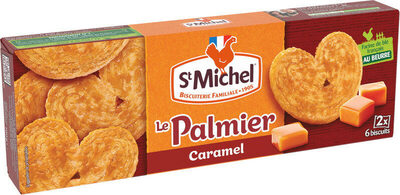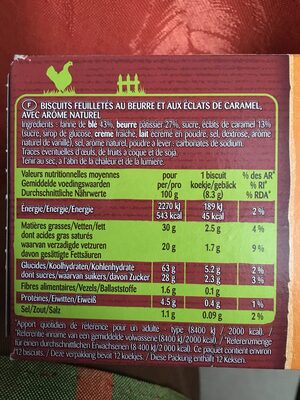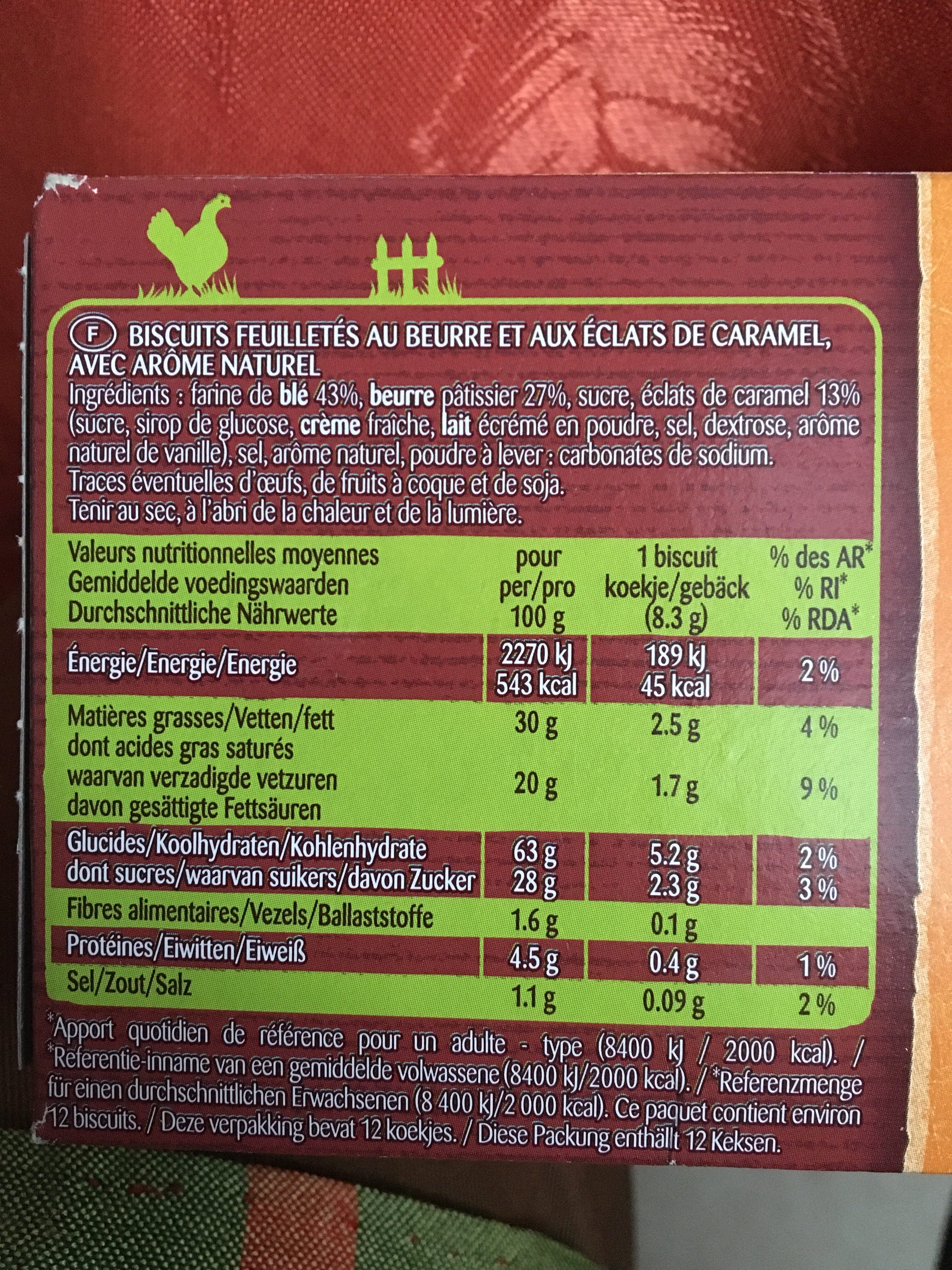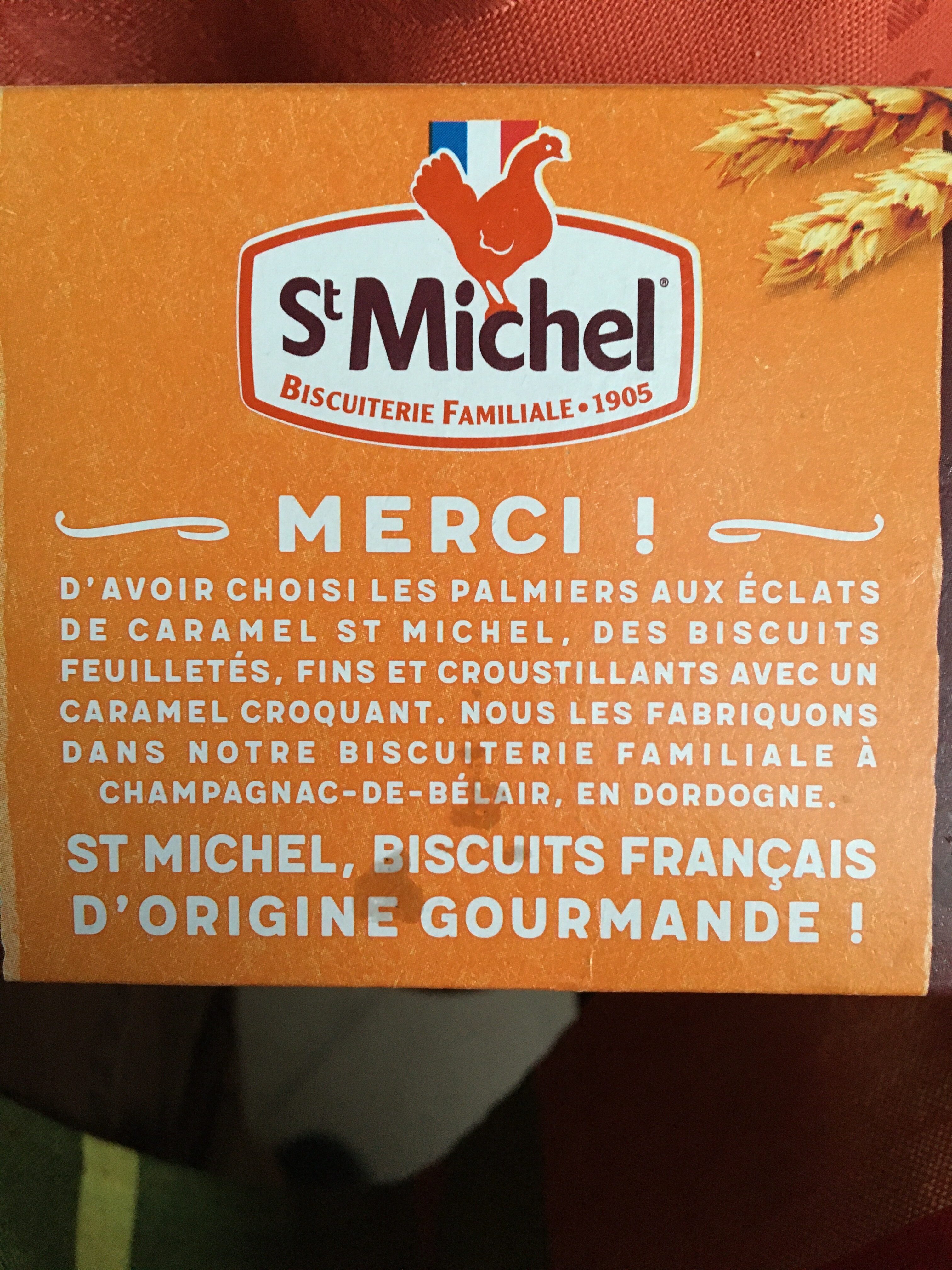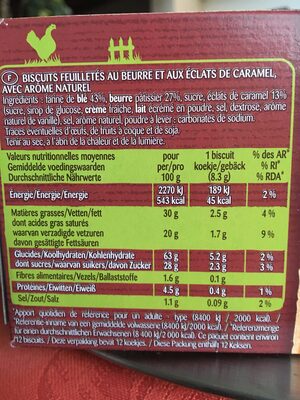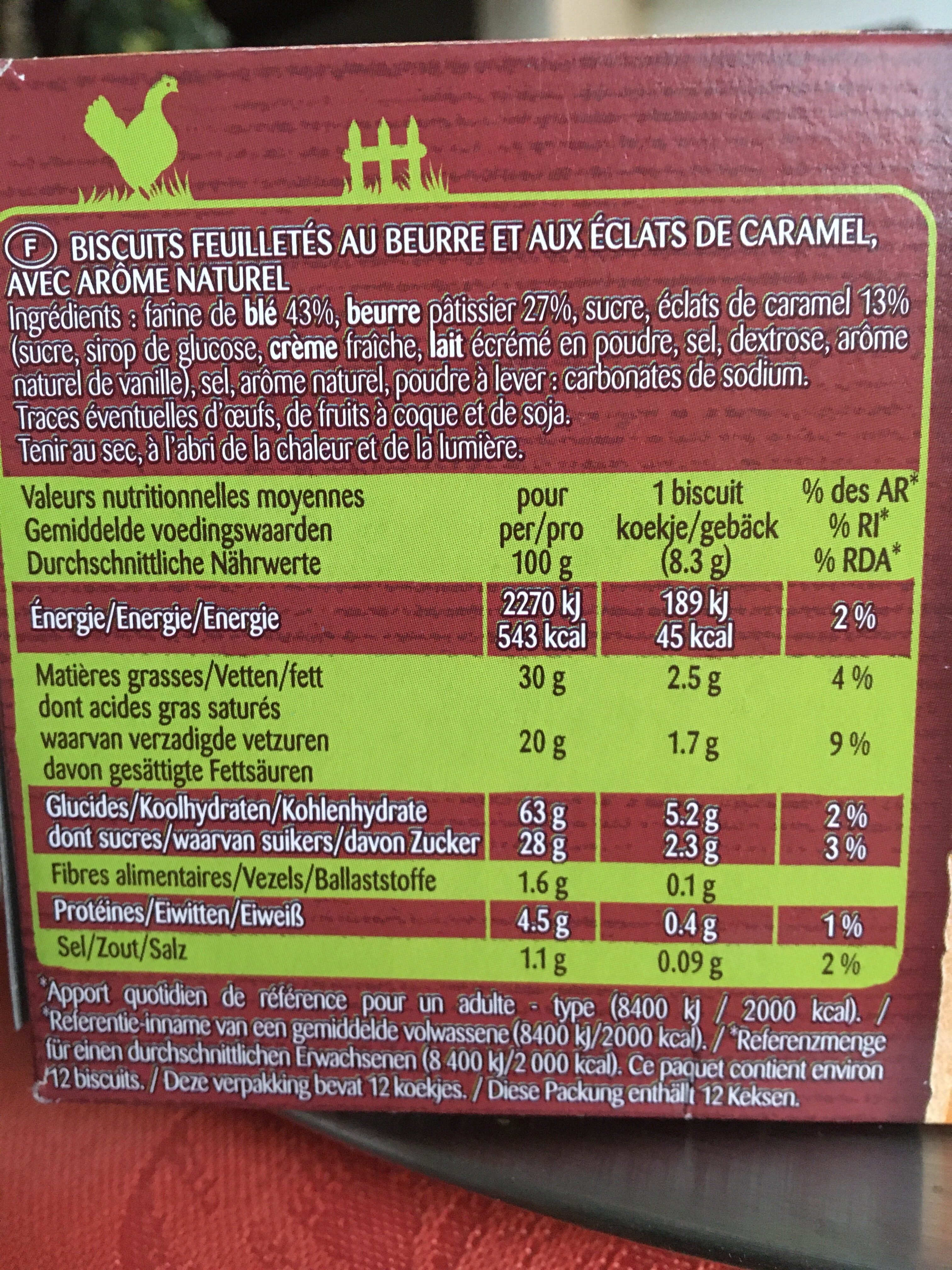แซงมิเซลคุกกี้เนยคาราเมล - st michel - 100 grammes
Barcode: 3178530409673 (EAN / EAN-13)
Common name: Biscuit feuilleté au beurre et aux éclats de caramel
Quantity: 100 grammes
Packaging: Plastic, Bag, Cardboard, fr:Etui en carton, fr:Film en plastique, fr:Pensez au tri!, fr:Point vert, fr:Sachet plastique à jeter, fr:Terracycle, fr:Étui carton à recycler
Brands: st michel
Brand owner: ST MICHEL
Categories: Snacks, Sweet snacks, Biscuits and cakes, Biscuits, Flaky biscuits, Palmiers
Labels, certifications, awards:
No preservatives, Green Dot, Made in France, Natural flavors, No colorings, No hydrogenated fats, No palm oil, fr:Blé français
Origin of ingredients: fr:Blé de France
Manufacturing or processing places: France
Traceability code: 1260
Stores: Magasins U, carrefour.fr
Countries where sold: France, United States
Matching with your preferences
Report a problem
Data sources
Product added on by stephane
Last edit of product page on by smoothie-app.
Product page also edited by aandre, aleene, bank-pc, date-limite-app, driveoff, ecoscore-impact-estimator, fabe56, foodless, kiliweb, magasins-u, mr-marque, off.e325fe1f-8392-46db-8029-0713d7164eb2, openfoodfacts-contributors, org-database-usda, packbot, quechoisir, roboto-app, tacite, thaialagata, yuka.R2FCUUFLTUZqT3N1a3ZRaTBDM3U0dDl2NDVxcVFrKzBMY285SVE9PQ, yuka.VFkwbExJVUhtOEJRaXZGazJrL2JvTmd0dzd5UFVYMk9jdG9CSVE9PQ, yuka.WjRjZUg0UWhuS2xSbzhNYjlUaisyczkrbDZPSFYyMjJLOWdNSWc9PQ, yuka.ZG9jL0RxbGYvL0lLdjhZaThCMk8rL3hxOWNlcFltcW9BTEpNSUE9PQ, yuka.sY2b0xO6T85zoF3NwEKvlkhDaPPw-D_cakbSw2C39v6BCbjaaMx3x7rWGqs.
